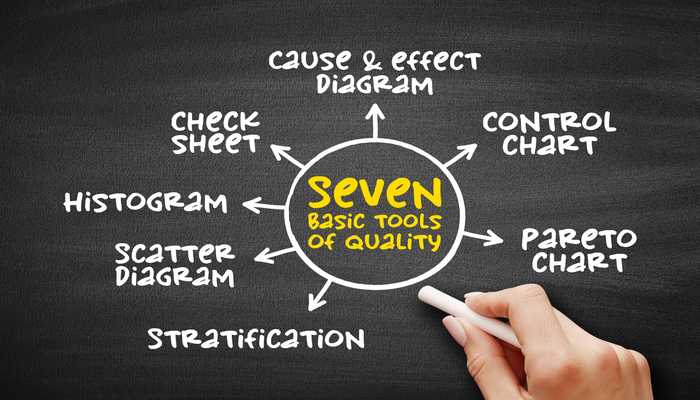Summary: ISO 9001 plays a role in helping companies enhance the quality of their offerings through guidelines that focus on quality assurance during production and final inspection. When organizations attain ISO 9001 certification, they showcase their dedication to quality management and assurance, ultimately boosting customer satisfaction and trust. For manufacturers, using a production compliance checklist ensures that production processes are in line with ISO 9001 standards, helping avoid potential compliance issues and improving overall production efficiency.
What does ISO stand for?
ISO is the International Organization for Standardization, a body that develops and publishes global standards. These standards cover a range of industries and sectors, ensuring uniformity, safety and quality in business practices.
Decoding International Standard
ISO 9001 stands out as an acknowledged standard within the ISO 9000 series. It outlines requirements for a quality management system that allows organizations to showcase their commitment to excellence. By adopting International Standard practices, companies can establish a foundation to deliver products and services that meet customer needs while continuously enhancing their processes.
ISO 9001 Certification
Getting ISO 9001 certified acknowledges that a company’s quality management system meets International Standard requirements. Accredited certification bodies typically conduct assessments through audits to evaluate the organization’s QMS. Attaining ISO 9001 certification showcases an organization’s dedication to quality. It can boost its standing and trustworthiness in the industry.
Principles of Quality Management
International Standard is founded on seven quality management principles that are the groundwork for organizations to establish and uphold a QMS. These principles cover;
- Customer Focus: Understanding and fulfilling customer needs are vital for long-term success.
- Leadership: Strong leadership from management is essential for setting up and driving the quality management system.
- Engagement of People: Involving and empowering employees fosters their commitment and contribution to quality.
- Process Approach: Managing activities and resources as processes improves efficiency and effectiveness.
- Improvement: Continuous improvement is crucial for enhancing performance and achieving goals.
Looking for a seamless quality solution?
Unlock the power of EQMS !
Critical Components of ISO 9001
International Standard includes components that organizations must consider when implementing a quality management system. These components encompass;
- Organizational Context: To achieve its quality goals, the organization must consider external factors affecting its operations.
- Leadership drives the Quality Management System (QMS) and fosters a culture of quality within the organization.
- Planning involves setting quality objectives, defining processes, and creating strategies to reach those objectives.
- Support is essential in providing the resources, infrastructure and skilled workforce to uphold the QMS effectively.
- Operations focus on executing planned processes, monitoring their efficiency, and addressing deviations from standards.
ISO 9001 Compliance
Organizations need to comply with the requirements outlined in the ISO 9001 standard. These include defining the scope of the quality management system. They are documenting processes along with their sequences and interactions. Let’s set quality goals and figure out how to reach them. We must define standards to evaluate how well our processes work and keep our customers happy. Put in place procedures to make sure we meet customer needs.
Create a system to check and measure if our products meet the required standards. Have steps to deal with any issues or mistakes and take action to fix them. Establish a way to continuously check, measure, analyze, and improve our Quality Management System (QMS).
Advantages of ISO 9001
Implementing International Standard offers perks for companies such as Enhanced customer satisfaction. This is achieved by meeting customer needs and improving product and service quality.
1. Improved credibility and reputation
Getting International Standard certified shows a dedication to quality that can boost an organization’s standing in the industry.
2. Increased efficiency
Implementing processes that are regularly reviewed and enhanced.
3. Better decision-making
Accessing data allows organizations to make choices for ongoing improvements.
4. Boosted employee involvement
Engaging employees in implementing International Standard promotes ownership and empowerment among staff members.
International Standard Holding a International Standard certification can give businesses an advantage, especially when competing for contracts or entering markets.
The Family of ISO 9000 Standards
The ISO 9000 series includes standards that help set up and maintain a Quality Management System (QMS). While ISO 9001 is the most widely recognized standard in this family, other standards also provide valuable guidance and resources. Let’s take a look at two key standards from the ISO 9000 family:
ISO 9000: 2005
The ISO 9000: 2005 standard provides an overview of the terms and principles used in the ISO 9000 series. It defines key concepts and outlines the basic principles of quality management systems. This standard serves as a resource for organizations seeking to understand the ISO 9000 family.
ISO 9004: 2018
ISO 9004: 2018 focuses on sustaining success and continuously improving an organization’s performance. It aligns with the requirements of ISO 9001 and offers a broader perspective on quality management. Emphasizing a holistic approach to quality, ISO 9004 considers the needs and expectations of all stakeholders, including customers, employees, shareholders, and society.
ISO 9004 provides guidance on:
- Leadership: Strategic planning and leadership for success.
- Objectives and Strategy: Setting goals that align with the organization’s mission and developing strategies to achieve them.
- Resources and Processes: Ensuring resources are available and implementing processes to support goal achievement.
The Influence of ISO 9001
The global influence of ISO 9001 on organizations has been profound. Here are some key ways in which International Standard has shaped business practices;
Promotion of Process Standardization: International Standard advocates standardizing organizations’ processes, leading to efficiency, fewer errors, and enhanced performance. Customer-Centric Approach: The emphasis on understanding and meeting customer needs in ISO 9001 has increased customer satisfaction and loyalty. Culture of Continuous Improvement: By fostering a culture of improvement through process reviews, identifying areas for enhancement and implementing corrective measures, organizations can drive sustained advancements in quality and performance.
Emphasis on Supplier Relationships
The collaborative method has resulted in enhanced management of the supply chain and an overall enhancement in the quality of resources. Global Recognition: The ISO 9001 certification is. They are acknowledged worldwide. It gives organizations an advantage, mainly when competing for contracts or venturing into markets.
Risk Mitigation
ISO 9001 mandates organizations to recognize and tackle risks that could affect product and service quality. This proactive risk management approach aids organizations in addressing issues and maintaining quality standards.
Organizational Shift
The adoption of ISO 9001 often triggers organizational transformation. It nurtures a focus on quality among employees, fosters accountability, and instils a dedication to excellence. ISO 9001 plays a role in enhancing quality standards, customer satisfaction and organizational brilliance across sectors.
FAQ | ISO 9001
What is ISO 9001?
ISO 9001 is an international standard for quality management systems (QMS), based on quality management standards outlined in ISO 9000. It provides a framework for organizations to ensure their products and services meet customer requirements and regulatory standards, while continuously improving processes.
Can ISO 9001 be applied to any industry?
Yes, ISO 9001 can be applied to organizations in any industry or sector, regardless of their size or type of products or services. The standard’s requirements are generic and can be tailored to suit the specific needs of different organizations.
Is ISO 9001 certification mandatory?
ISO 9001 certification is not mandatory. Organizations can choose to implement International Standard without seeking formal accreditation. However, certification can validate an organization’s commitment to quality and be advantageous in specific industries or tenders.
What are the benefits of ISO 9001 certification?
International Standard Certification brings several benefits to organizations, including improved customer satisfaction, enhanced credibility and reputation, increased operational efficiency, better decision-making based on data, improved employee engagement, and a competitive advantage in the market.
How long does it take to get ISO 9001 certified?
The time to achieve ISO 9001 certification varies depending on the size and complexity of the organization, its existing quality management practices, and the resources allocated to the implementation process. It can typically take several months to a year or more to implement International Standard and undergo the certification process.
How does ISO 9001 document control support quality management?
It is essential in maintaining the integrity of a Quality Management System (QMS). It ensures that all documents related to quality processes are properly created, reviewed, updated, and stored. By implementing ISO 9001 document control, organizations can ensure consistency, reduce errors, and maintain compliance with quality standards across all operations.
How often is ISO 9001 certification renewed?
ISO 9001 certification is valid for a specific period, typically three years. During this time, the certified organization is subject to surveillance audits conducted by the certification body. To maintain certification beyond the initial three-year period, organizations must demonstrate ongoing quality compliance through surveillance and periodic recertification audits.
Image: Adobe Stock – Copyright: © Pakin – stock.adobe.com





